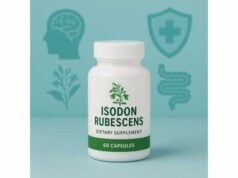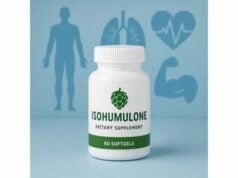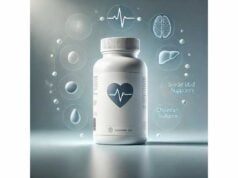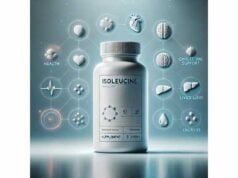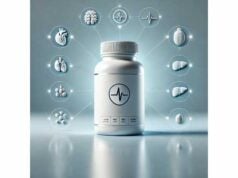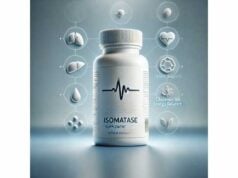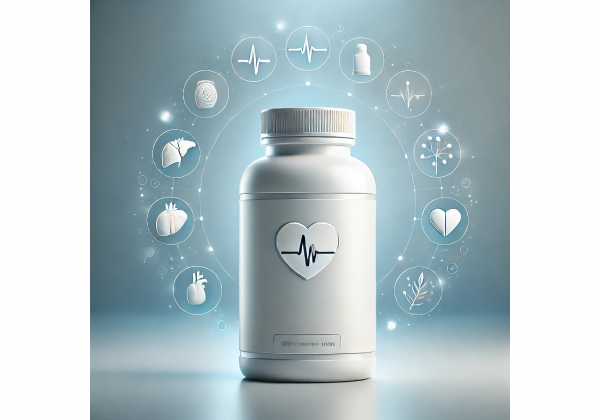
Isovanillin (3-hydroxy-4-methoxybenzaldehyde) is a phenolic aldehyde best known as an isomer of vanillin. Beyond flavor chemistry, it has drawn research interest for antispasmodic and antidiarrheal actions, quorum-sensing interference in bacteria, and enzyme inhibition (notably aldehyde oxidase). These properties make isovanillin relevant to gut comfort, food safety science, and drug–metabolism research. While human outcome trials are scarce, animal and cell studies map out clear mechanisms and practical considerations for anyone evaluating isovanillin as a standalone supplement or as part of multi-compound formulations. This guide explains what isovanillin is, where its benefits are most plausible, how to approach dosing when evidence is thin, how product form and metabolism shape results, who should avoid it, and how it compares with vanilla-related phenolics. The aim is pragmatic: realistic expectations, clear safety boundaries, and actionable steps you can take with your clinician’s guidance.
Fast Facts
- Antidiarrheal and antispasmodic effects shown in mice; likely mediated by reduced intestinal transit and smooth-muscle relaxation.
- Interferes with Pseudomonas aeruginosa quorum sensing in preclinical work, a mechanism that can lessen virulence signals.
- No established human dosage; a cautious exploratory range based on animal-to-human scaling is 10–30 mg/day with food for 8–12 weeks.
- Avoid during pregnancy and breastfeeding, and use caution with medications sensitive to enzyme modulation or gut motility changes.
- People with active liver disease or on narrow-therapeutic-index drugs should not self-experiment without clinical supervision.
Table of Contents
- What is isovanillin and how does it work?
- What benefits are realistic right now?
- How to take isovanillin: practical dosage and timing
- Bioavailability, metabolism, and why formulation matters
- Safety, side effects, and who should avoid it
- What the current evidence actually says
What is isovanillin and how does it work?
Isovanillin is a small aromatic molecule (a benzaldehyde) that differs from vanillin by the position of its hydroxy and methoxy groups on the ring. That minor rearrangement changes how it interacts with enzymes and microbial signaling systems. Naturally present in several plants and spices, isovanillin is also a useful building block in synthetic chemistry. In nutrition and supplements, it appears either as a purified compound, as part of plant extracts, or in experimental multi-ingredient formulas.
Mechanistically, isovanillin acts in three main ways:
- Smooth-muscle and gut motility effects. In animal models, isovanillin reduces intestinal propulsion and relaxes ileal smooth muscle. Practically, this translates into fewer wet stools in induced diarrhea models and a delay in onset of diarrhea episodes after a challenge. The data support a traditional antidiarrheal profile: slower transit, less cramping, and lower stool frequency during acute irritant exposure.
- Quorum-sensing interference in bacteria. Pseudomonas aeruginosa and other opportunists coordinate virulence through chemical “chatter” (quorum sensing). Preclinical studies show isovanillin dampens that chatter, reducing production of virulence factors and increasing susceptibility to conventional antibiotics. While this does not replace antibiotics, it hints at an “anti-virulence” role that could complement standard care in the future.
- Enzyme interaction and metabolism. Isovanillin is both a substrate for aldehyde dehydrogenase (forming isovanillic acid) and a selective inhibitor of aldehyde oxidase in some experimental systems. Aldehyde oxidase participates in drug metabolism; inhibiting it can, in theory, alter exposure to specific medications. Human clinical interaction studies are lacking, so the prudent stance is to treat isovanillin like other bioactive phenolics: useful in controlled settings, but deserving of caution if you take narrow-therapeutic-index drugs.
Because it is a small, moderately lipophilic molecule, isovanillin absorbs in the gut and circulates in free and conjugated forms (glucuronides/sulfates). Like other phenolics, conjugation is a transport and detox strategy, but local tissue deconjugation can regenerate active compound at sites of stress or inflammation. The upshot: plasma levels do not always predict local biological impact.
In everyday terms, isovanillin is best seen as a modulator rather than a strong agonist: it nudges motility, stresses bacterial messaging systems, and touches specific metabolic enzymes—subtle actions that can be helpful in the right context but are not a cure-all.
What benefits are realistic right now?
Isovanillin’s published effects cluster around gut comfort, microbial virulence modulation, and enzyme-level interactions. Here is what that means for real-world use:
1) Antidiarrheal support in short-term upsets.
Mouse studies show that oral isovanillin delays the onset of castor-oil- or magnesium-sulfate–induced diarrhea and reduces the number of wet stools. It also slows charcoal meal transit in the small intestine and relaxes isolated ileum tissue under contractile stimuli. For people, this suggests a potential role in transient functional diarrhea (for example, after a dietary indiscretion) where slowing transit is desired. It should not replace medical care for infectious diarrhea, bloody stools, dehydration, or chronic unexplained symptoms—those scenarios require clinician assessment.
2) Antispasmodic effects for cramping.
Ex vivo work on rat ileum indicates that isovanillin can ease contractions triggered by acetylcholine and serotonin. If you experience episodic cramping associated with food triggers, a carefully supervised self-trial might help. Because human data are limited, frame expectations modestly and avoid prolonged daily use without advice.
3) Anti-virulence activity against Pseudomonas.
In preclinical models, isovanillin reduces quorum-sensing–regulated virulence factors, which can make P. aeruginosa less aggressive and more susceptible to certain antibiotics. This is not the same as an antibacterial that kills the organism outright; rather, it weakens its coordination. The practical takeaway is future potential: food safety science, biofilm control, and adjuvant strategies in healthcare settings. It is not ready for self-treatment of infections.
4) Enzyme inhibition with theoretical drug-interaction relevance.
By selectively inhibiting aldehyde oxidase in experimental systems, isovanillin can alter the metabolism of drugs that rely on that enzyme. This is largely a bench finding, but it has clear real-world implications: if you take medications with tight dosing windows, discuss any phenolic supplement—including isovanillin—with your prescriber.
What not to expect.
There is no compelling human evidence that isovanillin improves long-term metabolic disease, yields weight loss, or treats chronic gastrointestinal disorders on its own. Avoid extrapolating cell or animal data to sweeping claims. If relief comes, it will likely be incremental and most noticeable during short-term digestive upsets.
How to know if it is helping.
For occasional diarrhea or cramping, track episodes per week, stool consistency, and need for rescue medication over 2–4 weeks. For gut comfort in sensitive eaters, keep a food and symptom log to identify whether isovanillin meaningfully changes day-to-day variability.
How to take isovanillin: practical dosage and timing
There is no established human therapeutic dose of isovanillin. Most data come from animal studies and ex vivo experiments, plus oncology research where isovanillin appears within a fixed-ratio, three-component formula (with curcumin and harmine). That context matters: combination biology does not define a solo dose. With those caveats, here is a pragmatic framework for cautious, short-term self-testing focused on gut comfort:
A cautious exploratory range (based on animal-to-human scaling)
- Mouse antidiarrheal studies used 2–5 mg/kg. Using standard body-surface–area conversion, the human-equivalent dose (HED) is roughly 0.16–0.41 mg/kg.
- For an average 70-kg adult, that translates to approximately 10–30 mg/day.
- Because supplement labels vary in purity and form, start lower when uncertain.
Suggested approach for adults
- Start at 10 mg/day with food for 3–5 days.
- If needed and well tolerated, increase to 20–30 mg/day, split with meals.
- Time-box your trial to 8–12 weeks and reassess; discontinue if you see no clear benefit.
Timing tips
- Take with a mixed meal to support absorption and reduce stomach irritation.
- For loose stools after higher-fat meals, consider taking the dose with that meal.
- Keep daily hydration steady.
Stacking and pairings
- For functional diarrhea, pair with soluble fiber (e.g., psyllium) away from medications; fiber thickens stool and may complement motility effects.
- For cramping, a heat pack and gentle movement (e.g., walking) remain helpful first-line measures.
- Do not stack with multiple antispasmodic supplements simultaneously; you could overshoot and cause constipation or excessive drowsiness (if formulas include sedative botanicals).
Product quality checklist
- Identity and potency: Look for products that name isovanillin and list milligrams per serving rather than a vague “phenolic blend.”
- Third-party testing: Preference for brands that publish Certificates of Analysis (identity, potency, heavy metals, microbes).
- Form: Capsules with verified content are preferable to unverified bulk powders.
- Storage: Keep tightly sealed, dry, and away from heat to limit aldehyde oxidation.
When food is sufficient
- If your goal is general wellness, a plant-forward diet rich in diverse phenolics (spices, herbs, cocoa, berries, tea) often provides broader benefits than a single-molecule supplement. Consider dietary changes first if you do not have a specific, short-term gut target.
Bioavailability, metabolism, and why formulation matters
Isovanillin’s small size and moderate lipophilicity help it cross membranes, but what you swallow is not necessarily what reaches target tissues. Four practical factors shape real-world results:
1) Rapid first-pass handling.
Like other aromatic aldehydes, isovanillin undergoes swift oxidation to isovanillic acid, primarily via aldehyde dehydrogenase in liver tissue. This conversion reduces free aldehyde exposure while generating an acid that can still participate in downstream pathways. The companion finding—selective inhibition of aldehyde oxidase in some contexts—means isovanillin can both be metabolized and modulate metabolism.
2) Conjugation and local reactivation.
After absorption, phenolics are commonly glucuronidated or sulfated to increase solubility. These conjugates circulate and may be deconjugated by tissue enzymes or microbial β-glucuronidases, locally regenerating the active form. This “ship and unbox” pattern explains why modest plasma levels can coexist with meaningful local effects.
3) Formulation changes exposure.
Delivery systems (simple powders vs. encapsulates) can influence both peak levels and area under the curve. While head-to-head human pharmacokinetics are not yet published for isovanillin itself, related phenolics show substantial formulation effects, and the same engineering principles apply (particle size, dispersion in oils, microencapsulation). If you switch brands and notice a change at the same milligram amount, formulation is a prime suspect.
4) Microbiome and motility context.
Your microbiome can transform phenolics and their conjugates, altering local signaling, bile acid metabolism, and stool form. Diets that sustain a diverse, fiber-fed microbiota (legumes, oats, fruit, vegetables, fermented foods) tend to stabilize responses. Additionally, baseline gut motility (fast vs. slow transit) will change how strongly you feel an antispasmodic or anti-motility effect.
How to tilt the odds in your favor
- Take with food that includes some fat (e.g., olive-oil-dressed salad, yogurt with nuts).
- If you are sensitive, split the dose with two meals.
- Maintain daily fiber and hydration to prevent rebound constipation if transit slows too much.
- Avoid alcohol as a “delivery vehicle”; it adds irritant load with no absorption advantage.
Measuring personal response
- For gut comfort: track stool frequency/consistency (e.g., Bristol scale), urgency, and cramp intensity over 2–4 weeks.
- For medication safety: if you take drugs metabolized by aldehyde oxidase or with tight dosing windows, do not experiment without medical oversight.
Safety, side effects, and who should avoid it
Isovanillin is generally well tolerated in animal studies, but high-quality, long-term human safety data are lacking. A careful approach minimizes risk:
Common, usually mild effects
- Gastrointestinal: nausea, fullness, or temporary constipation if motility slows too much; less often, loose stools if your baseline is very fast transit. Taking with meals and adjusting the dose usually helps.
- Headache or light fatigue: uncommon; try dose reduction or discontinuation if persistent.
- Allergy: rare with isolated compounds, but plant extracts can contain trace allergens—stop immediately if you suspect a reaction.
Potential interactions
- Aldehyde oxidase–metabolized drugs: Because isovanillin can inhibit aldehyde oxidase in experiments, there is a theoretical interaction risk for drugs that depend on this enzyme. Do not combine without approval if your medication list includes niche substrates or investigational agents.
- Gut-motility agents and anticholinergics: Stacking isovanillin with prescription antispasmodics or antidiarrheals can overshoot, causing constipation or slow gastric emptying.
- Antibiotics and infection care: Do not use isovanillin as a substitute for antibiotics. Its anti-virulence effects are adjunctive and experimental.
Who should avoid isovanillin (unless medically supervised)
- Pregnant or breastfeeding individuals.
- Children and adolescents.
- People with active liver disease or unexplained liver-test abnormalities.
- Anyone on narrow-therapeutic-index drugs or complex polypharmacy (transplant, oncology, certain antiarrhythmics).
Smart safety steps for everyone else
- Define your goal (e.g., fewer acute loose-stool episodes).
- Start low (≈10 mg/day) with food; increase only if needed.
- Track for 2–4 weeks; continue to 8–12 weeks only if benefits outweigh any effects.
- Hold isovanillin 1–2 weeks before elective procedures unless your care team advises otherwise.
- Stop and seek care for warning signs: blood in stool, fever, severe abdominal pain, dehydration, or unexplained weight loss.
What the current evidence actually says
A balanced reading of the literature supports isovanillin as a promising, niche-use phenolic rather than a broad-spectrum supplement. Key threads:
Antidiarrheal and antispasmodic actions (animal and ex vivo).
Oral doses of 2–5 mg/kg in mice reduced wet defecations after castor oil or magnesium sulfate challenge and slowed charcoal-meal transit. In isolated rat ileum, isovanillin relaxed contractions induced by acetylcholine and serotonin. These results align with traditional antispasmodic activity and justify cautious trials in short-term functional diarrhea—provided red-flag symptoms are absent.
Quorum-sensing and anti-virulence (preclinical).
Newer studies show isovanillin interferes with P. aeruginosa quorum sensing, lowering virulence signals and increasing sensitivity to select antibiotics in experimental systems. This places isovanillin among a growing class of anti-virulence modulators that may one day complement antibiotics or help manage biofilms in healthcare and food settings. Translation to routine clinical use awaits human data.
Enzyme metabolism and inhibition (bench to ex vivo).
Work in liver tissue and enzyme systems confirms rapid oxidation of isovanillin to isovanillic acid by aldehyde dehydrogenase, and demonstrates selective inhibition of aldehyde oxidase under defined conditions. These findings matter primarily for drug-development and interaction risk assessment, not for day-to-day wellness—though they underscore why medically complex patients should not self-experiment.
Combination oncology formulations (emerging, not generalizable).
A fixed-ratio oral agent containing isovanillin + curcumin + harmine has undergone phase I evaluation for safety in solid-tumor patients and continues to be explored preclinically across several cancers. These data do not define a solo isovanillin dose for wellness and should not be extrapolated to non-oncology self-use. They do, however, confirm that orally administered isovanillin can be part of a tolerated regimen when formulated and dosed under clinical supervision.
Evidence gaps.
There are no large randomized human trials of isovanillin as a single-ingredient supplement for digestive symptoms, infection prevention, or metabolic health. Dose–response, long-term safety, and real-world interaction data remain open questions. Until those are addressed, the most responsible use is short-term, goal-directed, and modest.
Bottom line.
If your aim is to temper occasional diarrhea or cramping, a short, low-dose trial with clear stop rules is reasonable for otherwise healthy adults. For infection prevention or chronic disease, isovanillin is not ready for prime time; keep it in the “interesting adjunct under study” category and prioritize established therapies and lifestyle measures.
References
- Antidiarrheal activities of isovanillin, iso-acetovanillon and Pycnocycla spinosa Decne ex.Boiss extract in mice (2014)
- Antispasmodic activity of isovanillin and isoacetovanillon in isolated ileum (2014)
- Metabolism of isovanillin by aldehyde oxidase, xanthine oxidase, aldehyde dehydrogenase and liver slices (2005)
- Isovanillin decreases the virulence regulated by the quorum sensing system of Pseudomonas aeruginosa (2024)
- GZ17-6.02 interacts with MEK1/2 and B-RAF inhibitors to kill melanoma and other tumor cells (2021)
Disclaimer
This content is educational and does not replace personalized medical advice, diagnosis, or treatment. Isovanillin may affect gut motility and drug metabolism and is not appropriate for everyone. Do not use it to self-treat infections or persistent gastrointestinal symptoms. Speak with a licensed healthcare professional before starting, stopping, or combining supplements—especially if you are pregnant or breastfeeding, have liver disease, or take prescription medications. If you try isovanillin, define your goal, use the lowest effective dose with food, and stop if you experience adverse effects or no clear benefit.
If you found this article helpful, please consider sharing it on Facebook, X (formerly Twitter), or your preferred platform, and follow us for more evidence-based health guidance. Your support helps us continue producing high-quality resources.

